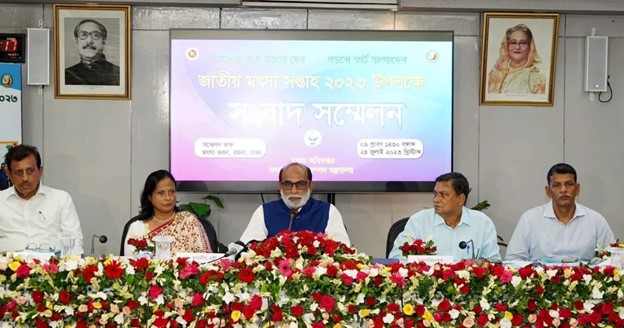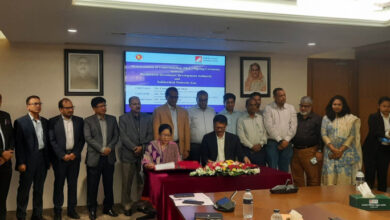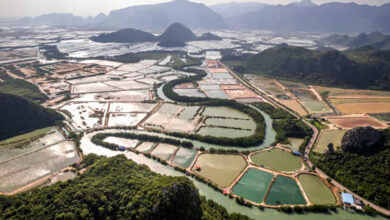
SM Rezaul Karim, Minster for Fisheries and Livestock, said that the government has set a target to produce 8.5 million tons of fish by 2041.
In a press conference held at Matsya Bhaban on the occasion of National Fisheries Week-2023, he said, “By 2041, the government plans to produce 8.5 million tons of fish, almost two times more than current production.”
Bangladesh, however, has achieved several remarkable successes in the present days. There has been a six-fold increase in fish production in Bangladesh over the past 38 years. The fisheries sector’s GDP grew by 5.74 percent. It contributes 3.57 percent to the country’s total GDP and 26.50 percent to its agricultural GDP.
Fish and fisheries products from Bangladesh are exported to 52 countries and the government received US $422.28 million from exports in fiscal year 2022-2023. The fisheries sector employs more than 19 million people directly or indirectly.
In order to achieve this remarkable success, the government has taken several effective initiatives. “The government has taken a number of steps to ensure that the fish produced in the country is safe to consume,” said the minister.
Furthermore, the minister provided assurances regarding the increase in fish production. “The smart fisheries sector will use innovative technology in the processes of production, marketing, processing, and exporting and the ministry is working towards contributing most to the development of a smart Bangladesh,” he added.

However, the government had previously built laboratories of international standards in the country in order to produce and export healthy and safe fish. Furthermore, the government provides agricultural loans with easy terms and low-interest rates to those who wish to pursue the versatile use of fish. To increase the country’s fish production, the government is working on both conventional and non-conventional approaches.
“Previously, we were focused on increasing fish production, but now we are focused on creating a “smart Bangladesh” through increased healthy and safe fish production,” said Rezaul.
In terms of freshwater fish production, Bangladesh currently ranks third in the world. The country is the largest producer of Hilsa (currently, 571 thousand metric tons of Hilsa are produced). A total of 500,000 tons of this national fish have been produced in the last 12 years, an increase of more than twice. It is the world’s leading producer of Hilsa. It is estimated that Bangladesh produces 80 percent of the total amount of Hilsa.
The minister is hoping that with the help of new initiatives from the government, fish production will achieve new milestones by 2041.
Bangladesh’s fisheries sector continues to contribute significantly to the food and nutrition security of both vegetarian and non-vegetarian products, entrepreneurship, job creation, poverty alleviation, and the rural economy of the country. The increase in production will undoubtedly improve the economic progress and prosperity of rural areas.
Jaber Bin Abdul Bari
Department of Oceanography, NSTU




